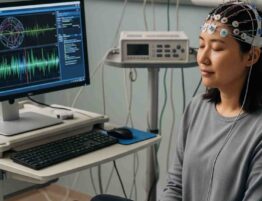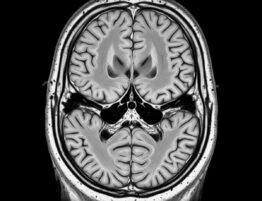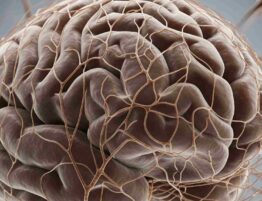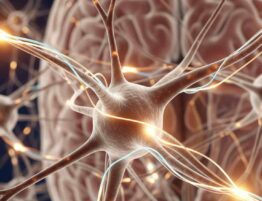Chronic pain, a persistent torment affecting millions, can baffle traditional treatments. But a glimmer of hope lies in the intricate world of neurological pathways. These pathways act like information highways. They carry pain signals from your body to your brain. In chronic pain, these highways become distorted. They amplify even minor sensations into excruciating experiences. Understanding these neural circuits offers a revolutionary approach to pain management.
By targeting these pathways, we can rewire the brain’s pain perception. We can offer relief beyond medications and invasive procedures.
This “pain reprocessing therapy” article unveils new possibilities for a future free from relentless suffering.
Understanding Chronic Pain
Chronic pain can be a debilitating condition, but there is hope. This block explores the complexities of chronic pain. We will go from its neurological roots to effective management strategies. You’ll learn how to take control and live a fulfilling life despite the pain.
Definition and Causes of Chronic Pain
Chronic pain is pain that persists beyond three months. It’s even after the initial injury or illness has healed. It’s a complex condition with a wide range of causes. Besides knowing how to retrain your brain, let’s take a look at common causes:
- Injury.
- Inflammatory conditions.
- Underlying medical conditions.
- Psychological factors.
- Unknown causes. In some cases, no underlying cause can be identified for chronic pain. This is sometimes referred to as idiopathic chronic pain.
The Role of the Nervous System in Chronic Pain
The nervous system plays a central role in chronic pain. Normally, pain signals travel from damaged tissues through nerves to the spinal cord and then to the brain. There, they’re interpreted as pain. In chronic pain, this process goes awry:
- Sensitization. Nerves can become hypersensitive. They amplify even minor sensations and cause them to be perceived as pain. This is where “how to ignore pain” does not matter.
- Central Sensitization. The brain itself can become more sensitive to pain signals. This can be caused by ongoing pain signals from the body or by changes in brain chemistry. It’s due to stress or other factors.
- Maladaptive Neuroplasticity. The brain’s ability to change and adapt can work against us in chronic pain. Over time, the pain pathways can become ingrained, making the pain even harder to manage.
Types of Chronic Pain from a Neurological Viewpoint
How to control pain mentally? Before this, it’s needed to categorize it based on the underlying mechanisms:
- Nociceptive Pain. This is the most common type, arising from direct damage to tissues. It activates the body’s normal pain pathways.
- Neuropathic Pain. This type arises from damage to the nerves themselves. It can manifest as burning, tingling, or shooting pain. It is often resistant to traditional pain medication.
- Central Pain Syndromes. These conditions involve malfunctioning pain processing in the central nervous system. It often leads to widespread and poorly localized pain. Examples include fibromyalgia and complex regional pain syndrome (CRPS).
- Psychogenic Pain. It’s not caused by physical damage. However, this type of pain is real and debilitating. It arises from complex interactions between the nervous system, emotions, and thoughts.
Understanding different types of chronic pain based on their neurological underpinnings helps pave the way for targeted treatment approaches.
The Neurological Approach to Managing Chronic Pain
Chronic pain disrupts lives, but the good news is there’s a growing toolbox for managing it. This PRT therapy approach focuses on targeting the nervous system pathways involved in pain perception. It offers relief beyond just masking symptoms.
Treatment Options for Chronic Pain
There’s no one-size-fits-all solution. So, treatment plans are often tailored to the individual’s specific needs. Here’s a breakdown of some key approaches.
Medication Management
While not always the primary focus, medications can play a role in managing chronic pain. Common options include:
- Over-the-Counter Pain Relievers. NSAIDs (nonsteroidal anti-inflammatory drugs) can help reduce inflammation and pain.
- Prescription Pain Relievers. Opioids are powerful pain relievers but come with risks of addiction and tolerance. They are typically used cautiously for severe pain.
- Neuropathic Pain Medications. These drugs target specific nerve activity and are often used for neuropathic pain.
- Antidepressants and Anticonvulsants. This is part of the brain and pain care. These medications can sometimes help modulate pain signals in the nervous system. It’s even if depression or seizures aren’t present.
Physical Therapy
Physical therapists can play a crucial role in pain relief therapy. They can help with:
- Improving Mobility and Function. Exercise strengthens muscles, improves flexibility, and promotes healthy blood flow. It can reduce pain and improve well-being.
- Manual Therapy. Techniques like massage and joint mobilization can help manage muscle tension and pain.
- Movement Retraining. Physical therapy can help retrain the brain to move differently and avoid pain-provoking patterns.
Neurological Interventions
These “how to stop feeling pain” techniques directly target the nervous system to disrupt pain signals:
- Spinal Cord Stimulation (SCS). A small device implanted near the spinal cord delivers mild electrical pulses. It’s to interrupt pain signals before they reach the brain.
- Dorsal Root Ganglion (DRG) Stimulation. Similar to SCS, but targets specific nerve roots for more targeted pain relief.
- Transcutaneous Electrical Nerve Stimulation (TENS). Low-voltage electrical currents go through electrodes placed on the skin. It’s to stimulate nerves and potentially reduce pain perception.
- Biofeedback. This technique trains patients to become aware of their physiological responses to pain and use relaxation techniques to modulate them.
The Importance of Comprehensive Pain Assessment
A crucial first step in the neurological approach is a comprehensive pain assessment. This involves:
- A detailed medical history.
- A physical exam.
- Diagnostic tests to identify the underlying cause of the pain.
Also, during the pain reprocessing therapy exercises, the assessment should consider psychological factors. They’re stress and anxiety that can contribute to pain perception. By understanding the full picture, doctors can develop a personalized treatment plan. It addresses the specific neurological mechanisms at play in the patient’s chronic pain.
This mix of medication management, physical therapy, neurological interventions, and psychological support offers a more holistic approach.
There is hope for people with chronic pain to find lasting relief and regain control of their lives.
Living with Chronic Pain
Chronic pain isn’t just a physical challenge. It can significantly impact every aspect of life. Here’s how to navigate this journey and find ways to thrive despite the pain.
Influence of Chronic Pain on Quality of Life
Chronic pain can cast a long shadow, affecting various aspects of well-being, so that is why brain retraining exercises are vital:
- Physical Limitations. Pain can restrict mobility. It makes daily activities like work, household chores, and exercise difficult.
- Social Isolation. Pain can lead to social withdrawal as activities become too painful or unpredictable.
- Sleep Disturbances. Difficulty getting comfortable or staying asleep due to pain can lead to fatigue and worsen pain perception.
- Mental Health. Chronic pain often co-occurs with depression, anxiety, and frustration. It creates a negative feedback loop.
- Work and Productivity. Pain can make it challenging to maintain employment or be productive at work.
- Financial Burden. Medical bills, lost wages, and the need for special equipment can create financial strain.
Managing Emotional Impacts of Chronic Pain
The emotional toll of chronic pain is real and we need to address it. Here are some pain relief therapy strategies:
- Acknowledge Your Emotions. Don’t bottle up feelings of frustration, anger, or sadness. Talk to a therapist or counselor who specializes in chronic pain.
- Join a Support Group. Connecting with others who understand your struggles can be validating.
- Practice Relaxation Techniques. Deep breathing, meditation, and progressive muscle relaxation can help manage stress.
- Challenge Negative Thoughts. Chronic pain can lead to negative self-talk. Practice cognitive behavioral therapy (CBT) to identify and reframe these thoughts.
- Focus on Gratitude. Make a daily list of things you’re grateful for, even small things, to maintain a positive outlook.
Pain Management Strategies for Effective Living
How to get rid of pain mentally? Despite the challenges, there are ways to live a fulfilling life with chronic pain. Here are some effective strategies:
- Set Realistic Goals. Break down large tasks into smaller, manageable steps. It’s to avoid frustration and maintain motivation.
- Pacing. Listen to your body and alternate between periods of activity and rest to prevent fatigue and flare-ups.
- Prioritize Sleep. Establish a regular sleep schedule. Create a relaxing bedtime routine and address any sleep disturbances with your doctor.
- Maintain a Healthy Lifestyle. Eat a balanced diet, exercise within your limits, and avoid smoking and alcohol.
- Explore Complementary Therapies. Among brain retraining exercises, consider acupuncture, yoga, massage therapy, or tai chi.
- Advocate for Yourself. Educate yourself about your condition. Communicate clearly with healthcare providers about your needs and treatment goals.
- Focus on What You Can Control. While you can’t control the pain itself, you can control how you react to it. Focus on the things you can influence, like your mindset and daily routines.
Chronic Pain Myths Busted: What People Get Wrong
Chronic pain, a constant companion for millions, can be shrouded in misconceptions. Here’s a breakdown of some common myths and the truths behind pain reprocessing therapy and pain itself.
Myth 1: Chronic Pain is Inevitable as You Age
While aging can increase the risk of certain conditions that cause pain, chronic pain is not a normal part of getting older. Pain is a signal that something is wrong, and it shouldn’t be dismissed as simply “age-related.” Many older adults manage chronic pain effectively through various treatment approaches.
Truth: Pain at any age deserves evaluation by a healthcare professional. Early diagnosis and treatment can significantly improve quality of life, regardless of age.
Myth 2: You Just Have to Live with Chronic Pain
Many people believe chronic pain has no solution, leading to feelings of helplessness. This is simply not true. While there may not be a cure for all types of chronic pain, there are numerous effective management strategies.
Truth: A comprehensive plan to retrain your brain reduces pain intensity and improves functioning. This plan may involve medication, physical therapy, neurological interventions, and lifestyle changes. Working with a healthcare team can help you find the right combination of approaches to achieve optimal pain control.
Myth 3: Only Prescription Drugs Can Manage Chronic Pain
Prescription medications can be a valuable tool in managing chronic pain, but they are not the only option. In fact, relying solely on medication can have drawbacks like side effects and potential dependence.
Truth: A holistic approach that combines different strategies is often the most effective.
Getting the Support You Need
Living with chronic pain can feel isolating, but you don’t have to go through this alone. It’s not about “how to ignore pain.” It’s about “how to fix this issue.” Here are resources to connect with others and get the emotional support you need:
Support Groups and Peer Counseling
The key things to remember are:
- Chronic Pain Organizations. Many organizations offer online and in-person support groups for people with chronic pain. These groups provide a safe space to share experiences, learn coping mechanisms from others, and feel less alone.
- Online Communities. Online forums and social media groups connect you with a wider community facing similar challenges. Sharing experiences and offering encouragement can be incredibly helpful.
- Peer Counseling. It’s not about how to control pain mentally. However, talking to someone who understands chronic pain firsthand can be invaluable. Peer counselors can offer emotional support, practical advice, and a sense of solidarity.
Professional Psychological Support
Pay attention to:
- Therapists Specializing in Chronic Pain. Therapists with experience can help you develop coping mechanisms. You will manage stress and anxiety. They will help you to address any depression or other mental health challenges that may go with chronic pain.
- Cognitive Behavioral Therapy (CBT). This is part of PRT therapy. CBT can help you identify and change negative thought patterns that worsen pain perception.
- Mindfulness-Based Therapies. Meditation can help you become more aware of your thoughts and feelings and learn to respond to pain in a more helpful way.
Connect with a support group, peer counselor, or therapist. It can make a significant difference in managing the emotional impact of chronic pain. It allows you to build a network of support, learn valuable skills, and find strength in shared experiences. Don’t hesitate to reach out and seek the help you deserve.












Please, leave your review
Write a comment: